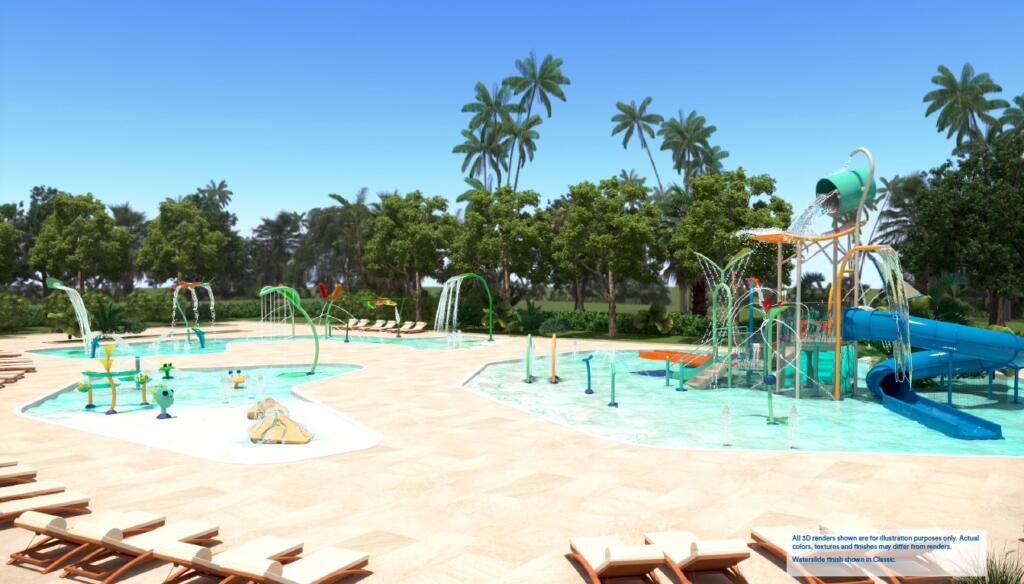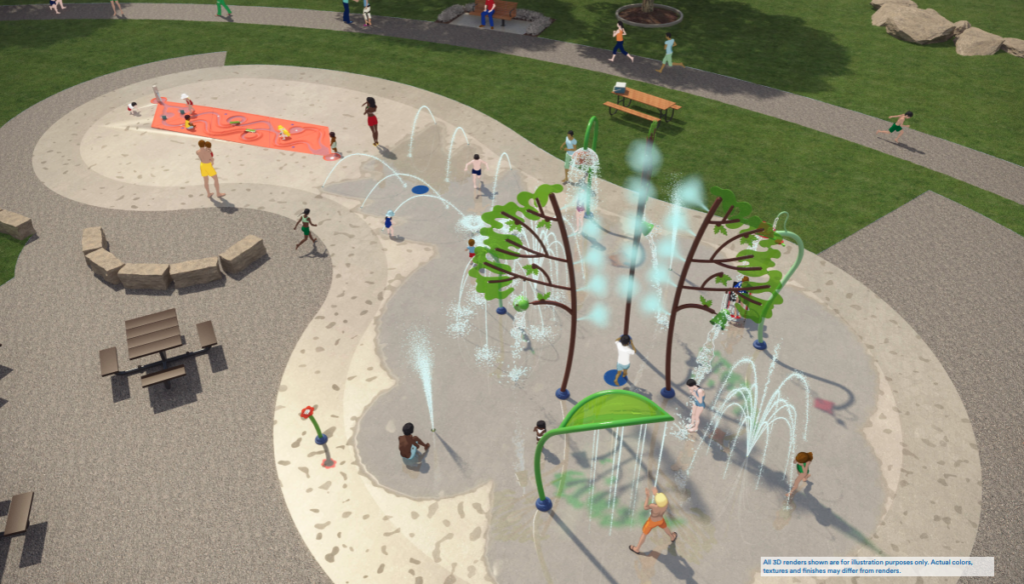What Healthy, Sustainable Play Means for Your Community
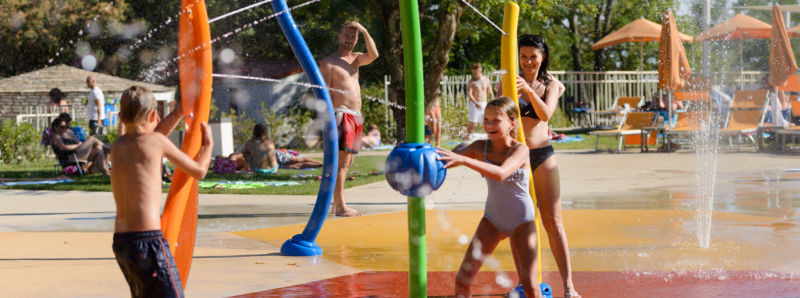
Update August 24, 2023: Sustainability is one of the key considerations in Splashpad design and is always at the forefront when Vortex embarks on a new community project. When we speak about sustainability, we of course are including water management, but it’s really so much more than that. We think in terms of three pillars:
Social: Maintaining long-term well-being for people and communities;
Environment: Living within the means of the planet’s natural resources;
Economic: Delivering ROI, but not at the expense of the other two pillars.
Let’s break down how a Splashpad positively contributes to healthy, sustainable play for your community in terms of play experiences, child development, water management, and the evolving needs of today’s families.
Childhood Development and the Spectrum of Play Experience
We all know that play is crucial for healthy childhood development. But not all play is created equal. When communities design new aquatic spaces, they need to consider more than just thrill levels and safety concerns.
A winning aquatic play space is an ecosystem of sorts—one where every element, no matter how small, contributes to some facet of childhood development or family dynamics. Sharpening cognitive abilities, discovering the thrills of competition, understanding cause and effect—all these objectives must be accounted for in the design.
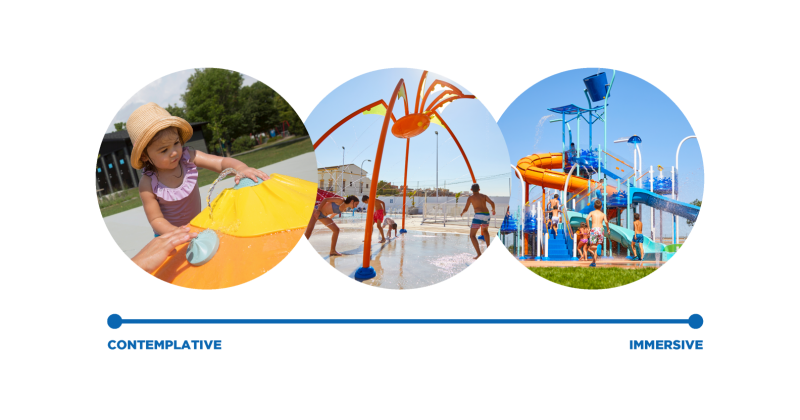
To fully understand how Splashpad’s engage with families, we must first look at the full spectrum of different waterplay experiences:
- On the softer end of the spectrum, we have refreshing sensations, visually stimulating designs, and tactile experiences.
- As toddlers start growing and get a little more curious, there are events that promote discovery, exploration, and imagination.
- The next step is water play designs that offer anticipation, the opportunity to team play and compete as well as more thrilling categories for older siblings.
Understanding Bay Areas
Once a Splashpad’s different waterplay experiences are decided upon, they can be organized into different bay areas. Some areas may reside on the softer end of the spectrum, while others may focus on more thrilling features.
By grouping products into bay areas, children can feel safe and transition from one intensity level to the next on their own terms. The organizational approach also makes it easier for parents to keep an eye on their little ones, giving moms and dads peace of mind. Here’s what the design might look like when everything comes together:
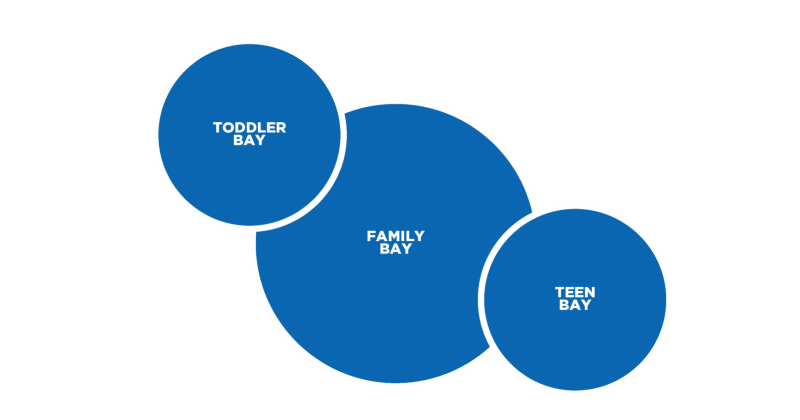
Engineering for Inclusivity
By designing different bay areas with varying intensity levels, Splashpads optimize not only play-value but also inclusivity. They promote a healthy exchange between children of all ages.
But inclusivity isn’t only about age-appropriateness. One major advantage of Splashpads is that because they’re zero-depth, they allow children of not only all ages but also all abilities to get in on the fun.
And beyond the zero-depth features, designs can also include several ground-level waterplay events to accommodate those with limited mobility. Also, it’s important to include a beach-entry slope for family members with wheelchairs.
An Approach to Environmental Sustainability
As we alluded to, this year’s International Day of Families is about climate action. In keeping with the spirit of the theme, here are a few sustainability tips to consider when designing your community Splashpad:
Find the Water Management System That’s Right for Your Community
Splashpads, by their very nature, are already rather water efficient. With that said, recirculation and repurposing systems can help your community significantly cut back on usage even more.
With recirculation, the system recycles and disinfects the water to and from the play area. Repurposing, on the other hand, collects water that’s passed through the drain into a holding tank, which is then pumped through an irrigation station and back to nature. With this latter system, you can actually design your Splashpad to meet the precise GPM specification of its surrounding landscape, ensuring not a drop is wasted!
Use Water Sequencing
Rather than have all features run simultaneously, Splashpads are often programmed with sequencing between bay areas (in other words, when certain features in Bay Area 1 turn on, others in Bay Area 2 shut off). Doing so not only improves water efficiency; it also creates a healthier flow of human traffic.
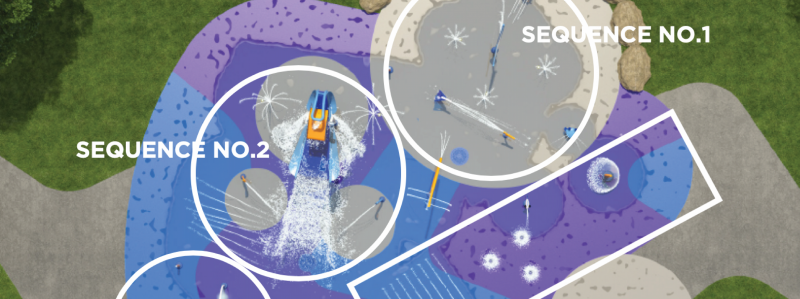
Embrace On-Demand Activation
Children love on-demand activation. It teaches them cause and effect and makes them masters of their own little universe. At the same time, this simple design approach does wonders for Mother Nature!
Read more about Water Management options
A New Generation of Families
Finally surpassing Baby Boomers, Millennials are currently the most populous generation in the west. In 2016, 82% of US births were by millennial mothers. Today, more than half of millennials are parents. And how do these young moms and dads value outdoor time? Considerably: children of millennial parents spend an average of 2.23 hours outdoors every day—nearly 30 mins longer than the children of Baby Boomers and Gen Xers.
All this to say, today’s families are more outdoorsy than ever before. It follows that when it comes to aquatic facilities, expectations are exceptionally high. And rightfully so—communities play a major role in determining the quality of childhood development and family bonding. This year, as we celebrate International Day of Families, think about what your neighborhood is doing to keep everyone happy and healthy.
